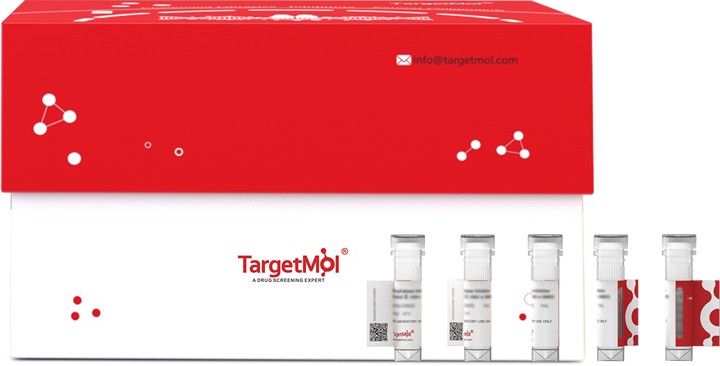Shopping Cart
- Remove All
 Your shopping cart is currently empty
Your shopping cart is currently empty

CD66B Protein, Human, Recombinant (His & Avi), Biotinylated is expressed in HEK293 mammalian cells with His and Avi tag. The predicted molecular weight is 34.7 kDa and the accession number is P31997.

| Pack Size | Price | Availability | Quantity |
|---|---|---|---|
| 20 μg | $462 | 7-10 days | |
| 100 μg | $1,070 | 7-10 days |
| Biological Activity | Measured by its ability to bind recombinant CEACAM6-His in a functional ELISA. |
| Description | CD66B Protein, Human, Recombinant (His & Avi), Biotinylated is expressed in HEK293 mammalian cells with His and Avi tag. The predicted molecular weight is 34.7 kDa and the accession number is P31997. |
| Species | Human |
| Expression System | HEK293 Cells |
| Tag | His, Avi |
| Accession Number | P31997 |
| Synonyms | NCA-95,CGM6,CD67,CD66b,carcinoembryonic antigen-related cell adhesion molecule 8 |
| Construction | A DNA sequence encoding the human CEACAM8 (NP_001807.2) (Met1-Ser319) was expressed with a c-terminal polyhistidine tagged AVI tag at the C-terminus. The expressed protein was biotinylated in vivo by the Biotin-Protein ligase (BirA enzyme) which is co-expressed. Predicted N terminal: Gln 35 |
| Protein Purity | > 95 % as determined by SDS-PAGE. |
| Molecular Weight | 34.7 kDa (predicted) |
| Endotoxin | < 1.0 EU/μg of the protein as determined by the LAL method. |
| Formulation | Lyophilized from a solution filtered through a 0.22 μm filter, containing PBS, pH 7.4. Typically, a mixture containing 5% to 8% trehalose, mannitol, and 0.01% Tween 80 is incorporated as a protective agent before lyophilization. |
| Reconstitution | A Certificate of Analysis (CoA) containing reconstitution instructions is included with the products. Please refer to the CoA for detailed information. |
| Stability & Storage | It is recommended to store recombinant proteins at -20°C to -80°C for future use. Lyophilized powders can be stably stored for over 12 months, while liquid products can be stored for 6-12 months at -80°C. For reconstituted protein solutions, the solution can be stored at -20°C to -80°C for at least 3 months. Please avoid multiple freeze-thaw cycles and store products in aliquots. |
| Shipping | In general, Lyophilized powders are shipping with blue ice. |
| Research Background | CEACAM8, also known as CD66b or NCA-95, is a single chain, GPI-anchored, highly glycosylated protein belonging to the carcinoembryonic antigen family. There are four members in this family: CD66a, CD66b, CD66c, and CD66d. Members of CEACAM family are widely expressed especially on human neutrophils, and, depending on the tissue, capable of regulating diverse functions including tumor promotion, tumor suppression, angiogenesis, and neutrophil activation. Abnormal overexpression and downregulation of some CEACAMs have been described in tumor cells. Monoclonal antibodies grouped in the CD66 cluster recognize CEACAM members. Ectopic CD66 expression is commonly detected in B-cell lineage acute lymphoblastic leukemia (ALL). CEACAM8(CD66b) is also an activation marker for human granulocytes. However, its biological functions are largely unknown in eosinophils. It has been reported that CD66b is highly expressed on the surface of human peripheral blood eosinophils isolated from healthy individuals. Engagement of CD66b by mAb or a natural ligand, galectin-3, activated a Src kinase family molecule, hemopoietic cell kinase (Hck), and induced cellular adhesion, superoxide production, and degranulation of eosinophils. CD66b molecules were localized in lipid rafts, and disruption of lipid rafts or removal of the GPI anchor inhibited the adhesion and activation of eosinophils. Importantly, CD66b was constitutively and physically associated with a beta2 integrin, CD11b, and cross-linking of CD66b induced a striking clustering of CD11b molecules. Thus, CD66b molecules are involved in regulating adhesion and activation of eosinophils, possibly through their localization in lipid rafts and interaction with other cell surface molecules, such as CD11b. Binding of exogenous or endogenous carbohydrate ligands(s) to CD66b may be important in the release of proinflammatory mediators by human eosinophils. |

Copyright © 2015-2025 TargetMol Chemicals Inc. All Rights Reserved.